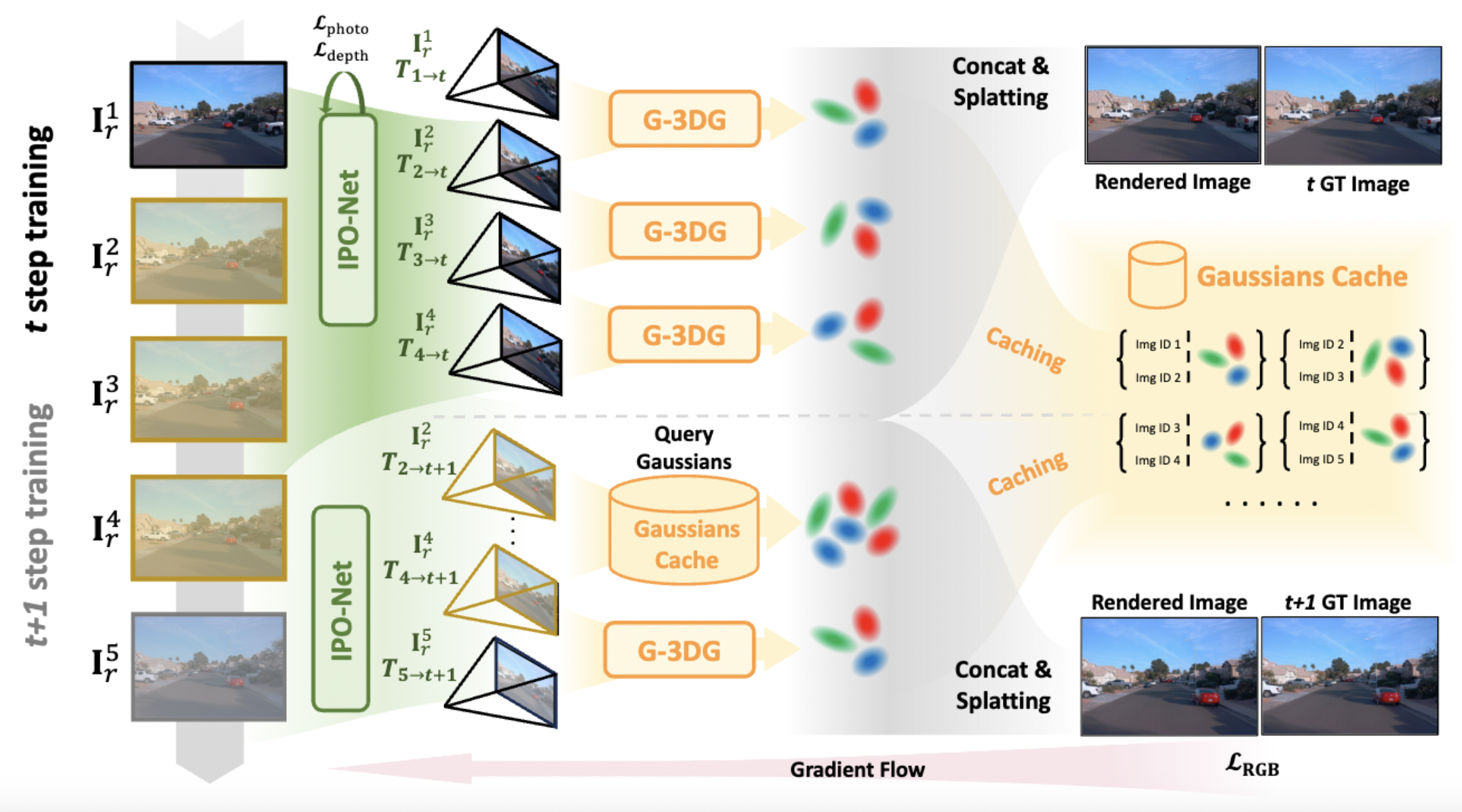Method
An overview of our method, demonstrated by using two continuous training steps given \(N\) selected nearby images. In the first training step, reference views are selected from nearby time \(r\in \mathcal{N} (t)\), then the IPO-Net estimates the relative poses between reference and target image { \(\mathbf{T}_{r\rightarrow t}\) }for 3D-Gaussian predictions. Then \(\mathbf{I}^1_r \cdots \mathbf{I}^4_r\) forms three image pairs and is fed into the G-3DG model to predict Gaussians \(\mathbf{G}_1\cdots\mathbf{G}_3\) for novel view splatting and store them in Gaussians cache. In the second step, since {\(\mathbf{I}^2_r \cdots \mathbf{I}^4_r\)} are collaboratively used by the last step, we directly query their image ID in the Cache Gaussians and pick up corresponding Gaussian points \(\mathbf{G}_2,\mathbf{G}_3\) with newly predicted \(\mathbf{G}_4\) for novel view splatting.

BibTeX
@article{li2024GGRt,
title={GGRt: Towards Generalizable 3D Gaussians without Pose Priors in Real-Time},
author={Hao Li and Yuanyuan Gao and Chenming Wu and Dingwen Zhang and Yalun Dai and Chen Zhao and Haocheng Feng and Errui Ding and Jingdong Wang and Junwei Han},
year={2024},
eprint={2403.10147},
}